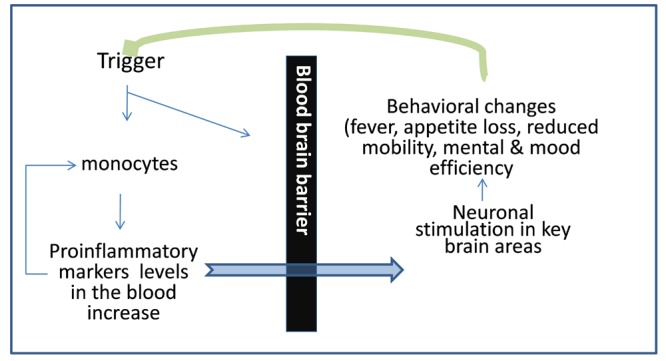Figure 1.

Communication between central nervous system and immune system. Triggers (cardiometabolic and lifestyle factors, or injuries of other nature) occurring anywhere in the body are communicated to the CNS via release of proinflammatory factors. An inflammatory response is initiated when monocytes/macrophages are activated by pathogens or tissue damage to release pro-inflammatory cytokines, including interleukin (IL)-6, IL-1β, and tumor necrosis factor (TNF)-α, and chemokines, such as IL-8. These chemical mediators coordinate a local inflammatory response, resulting in the recruitment and activation of leukocytes to the site of invasion/injury. They also enter peripheral circulation to stimulate a systemic response, which includes the synthesis and release of acute phase proteins, such as C-reactive protein and fibrinogen. The CNS responds to this information by initiating behaviors to adapt to such triggers (e.g., fever, reduced activity) and by releasing immune mediators to respond to the peripheral stimulus (green arrow). In normal circumstances, peripheral inflammatory responses are terminated quickly by the action of anti-inflammatory factors released locally and systemically to shut off the inflammatory response, leading to the adaptive restoration of a lower inflammatory state.
